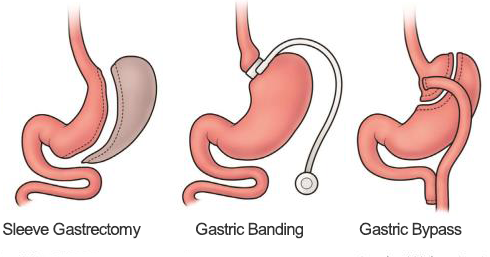Non-Surgical & Surgical Options
Non-Surgical Options
ORBERA™ Managed Weight Loss System
During this non-surgical procedure done u nder a mild sedative, a thin and deflated ORBERA™ Intragastric Balloon
is placed into the stomach. It is then filled with saline until it’s
about the size of a grapefruit, to reinforce proper portion control. Once
the balloon is in place, a 12-month coaching program begins. At six months,
the balloon is removed in the same way it was placed.
nder a mild sedative, a thin and deflated ORBERA™ Intragastric Balloon
is placed into the stomach. It is then filled with saline until it’s
about the size of a grapefruit, to reinforce proper portion control. Once
the balloon is in place, a 12-month coaching program begins. At six months,
the balloon is removed in the same way it was placed.
ORBERA™ is intended for adult patients with a Body Mass Index (BMI) of 30 to 40 who have attempted more conservative weight reduction alternatives.
Surgical Options

Sleeve Gastrectomy
During this surgery, the surgeon creates a small, banana-shaped pouch. Sleeve gastrectomy is typically considered as a treatment option for bariatric surgery patients with a BMI of 35 or higher (see selection criteria on page) and is often performed as the first part in a two-procedure treatment, the second part being gastric bypass.
Currently bariatric surgeons are seeing sufficient weight loss following sleeve gastrectomy for it to be considered a primary procedure and not a two-step procedure.
Gastric Banding
RWJ performs laparoscopic adjustable banding, which requires two devices be implanted in the abdomen: a silicone band and an injection port. The silicone band is placed around the upper part of the stomach, creating two connected chambers of the stomach.
The injection port is attached to the abdominal wall underneath the skin and connected to the band with soft, thin tubing.
The band is adjustable and several adjustments will be made periodically after the procedure is completed. Your doctor will use a needle to inject saline solution into your band through the port, increasing the amount of restriction provided by the band, which in turn, helps you feel fuller.
Gastric Bypass
Another minimally-invasive procedure, laparoscopic gastric bypass essentially creates a smaller stomach. A Y-shaped section of the small intestine is attached directly to this small stomach pouch allowing food to bypass a large portion of the small intestine eliminating some food and calorie absorption. The smaller stomach pouch helps patients feel fuller sooner so they will eat less food.
The Recovery
Recovery time for bariatric surgery is minimal. Most patients (depending on the type of procedure) will go home within 23 hours. If you required an open-surgical approach, your hospital stay will be about five days.
The Results
Life after surgery is where the commitment and dedication plays an important part in the long-term success of the weight-loss journey. Surgery gives patients the tool to assist with the weight loss, but it is the mental and emotional changes that need to be made after the surgery that will ensure success.
Most of the weight-loss following bariatric surgery happens in the first six to nine months. Optimize this time by committing to a healthy diet and exercise plan. You will be burning more calories during this initial phase, and it is important to take advantage of this by putting in the extra effort to exercise every day.
Equally as important are the patients’ lifetime follow-up appointments, lab testing, healthy nutrition and proper vitamin regimins.
Studies show that patients who commit to eating a healthy diet, take the required supplements, have routine blood work and incorporate an exercise plan into their lives will achieve the best results in the long run with bariatric surgery.



